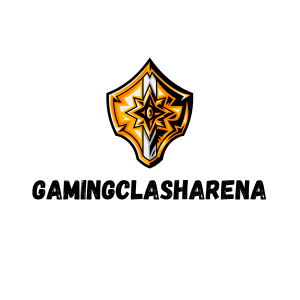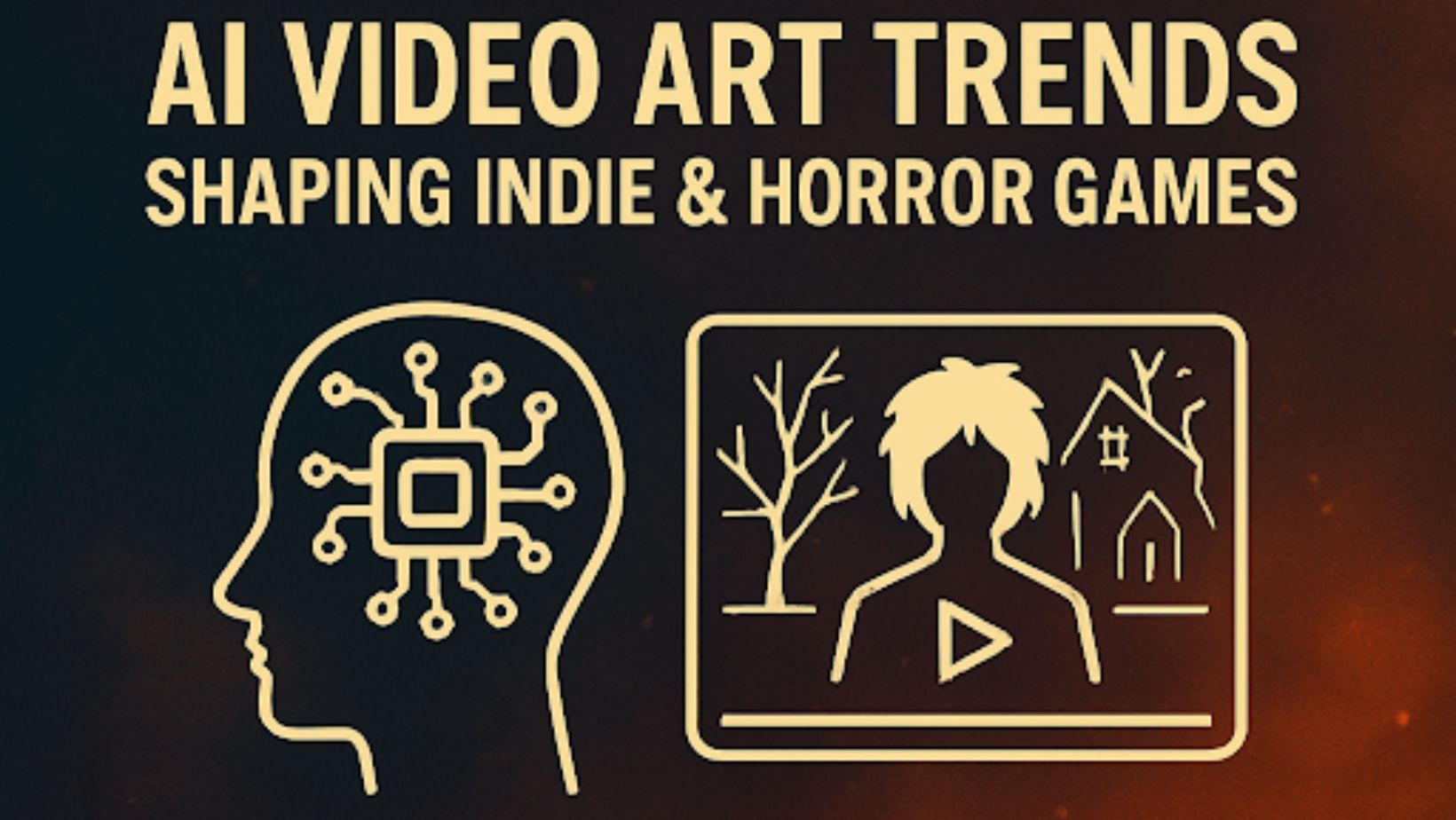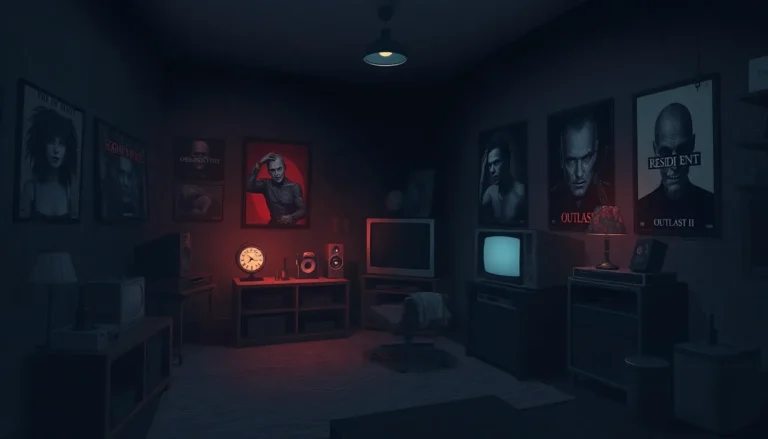As a game developer, designer, or horror enthusiast, you’re likely witnessing the rapid transformation of visual storytelling through artificial intelligence. The rise of AI-generated content, particularly in video art, has begun to reshape creative processes across various gaming genres. Nowhere is this more intriguing than in the realm of indie and horror game genres known for innovation, immersion, and emotional storytelling.
From stylized fear to surreal dreamscapes, AI video art trends are giving you fresh tools to experiment with mood, atmosphere, and storytelling depth. With growing access to technology and creative platforms, you can now tap into tools that bring your visual concepts to life faster than ever before without sacrificing your artistic identity.
How AI Video Art Fits into the Horror Game Space
Horror games thrive on emotion. Whether you’re developing a slow-burn psychological thriller or a fast-paced jumpscare experience, visuals often dictate the player’s level of immersion. Today’s AI video art trends are making it easier for you to generate creepy environments, uncanny character designs, and unsettling animations without the overhead of a large team or massive budget.
Actually, a lot of horror games already use unique visual narratives to differentiate themselves on websites like Steam or Itch.io. AI can enhance this by creating eerie backgrounds, dynamically morphing textures, and abstract effects that evolve as the game progresses, all while aligning with your original concept.
Indie titles like Faith: The Unholy Trinity, with its pixelated retro horror aesthetic, or VR horror experiences such as Phasmophobia, rely heavily on a mixture of nostalgic visual cues and immersive tension. Through AI video art tools, you now have the ability to echo these design principles, or diverge completely into surreal or painterly horror visuals that feel fresh yet haunting.
How AI Video Art Trends Are Changing Game Creation
One of the most significant changes is the way you can approach prototyping. In the past, it may have taken weeks to experiment with different visual styles. Now, with the use of an AI video art generator, you can iterate multiple visual ideas in a single session. These tools help you visualize lighting scenarios, background variations, or abstract sequences that might otherwise be hard to create manually.
This especially impacts indie horror games, where unique aesthetics are often more important than photorealistic graphics. You might want your game to feel like a decaying VHS tape or a cursed oil painting, and AI can generate those visual cues on demand. The flexibility AI offers means you no longer have to compromise between innovation and feasibility.
When crafting horror PS5 games or exploring VR-based fright experiences, visual fidelity and frame pacing are crucial. AI-generated art allows you to simulate the shifting shadows and fluctuating environments that horror games excel in, while also optimizing asset creation for modern consoles or cross-platform compatibility.
As developers build cross-platform horror games, particularly those released on both PC and console or through cloud gaming services, AI video art also supports consistency across screen types and resolutions. This ensures that your game retains its creepy atmosphere, whether it’s played on a handheld device, VR headset, or widescreen monitor.
Blending Retro Horror with AI-Powered Nostalgia
Nostalgia plays a major role in horror design. Games inspired by PS1-era horror (Silent Hill, Resident Evil, etc.) have made a resurgence among indie developers and fans. You may now recreate or remix this vintage feel with contemporary twists by using AI-generated textures, filters, and animation styles.

Imagine building a 32-bit-inspired landscape that slowly decays into surreal glitch horror, or creating character animations that deliberately stutter to mimic broken puppets. AI enables these artistic flourishes to be created and adjusted in ways that preserve your storytelling intent.
The intersection of retro aesthetics and AI gives you full control over visual tone, which is especially powerful when your goal is to unsettle or disorient players.
Many developers also find it easier to localize game content visually with AI. While language localization is one step, visual localization, altering art to better fit regional fears or cultural references, is a rising trend. Through AI tools, you can quickly test different design languages for your global audience, adding another layer of connection and fear resonance.
If you’re experimenting with video apps for quick mockups or trailers, AI integration can further boost the production value of these materials. Whether you’re creating teasers for crowdfunding campaigns or pitching to publishers, the ability to generate compelling horror visuals quickly can make your project more competitive.
What This Means for You as a Creator
The integration of AI video art into horror and indie game development doesn’t mean a loss of creative control. In fact, it enhances your ability to iterate, experiment, and scale visuals that were previously cost-prohibitive. With an AI video art generator, you can move from concept to prototype with greater speed, freeing up more time to focus on gameplay mechanics and narrative depth.
These tools can also become part of your brainstorming process. Instead of staring at a blank screen, you can use AI to spark inspiration for a haunted chapel in a forest, a morphing antagonist, or dynamic weather that reacts to fear levels. AI becomes your creative assistant, helping you push boundaries while staying grounded in your artistic vision.

For indie teams or solo developers, this support is invaluable. Horror is a genre driven by atmosphere, and AI-generated video art helps you control every flicker of light and shadow with precision. From haunted apartments to retro-themed psychological thrillers, the visuals you dream of are now more achievable.
Looking Ahead
As the industry evolves, expect to see more developers adopting these tools not as a replacement for creativity, but as a new set of brushes in the artist’s toolbox. Whether you’re working on a VR ghost-hunting adventure, a 90s-inspired fearfest, or an atmospheric PS5 horror title, AI video art can help you bring your vision to life.
Ultimately, it’s about giving you more freedom, freedom to create faster, explore deeper, and engage your audience through visuals that evoke powerful, primal emotions. With the rise of the AI video art generator, you have more pathways than ever to craft unforgettable horror experiences.




